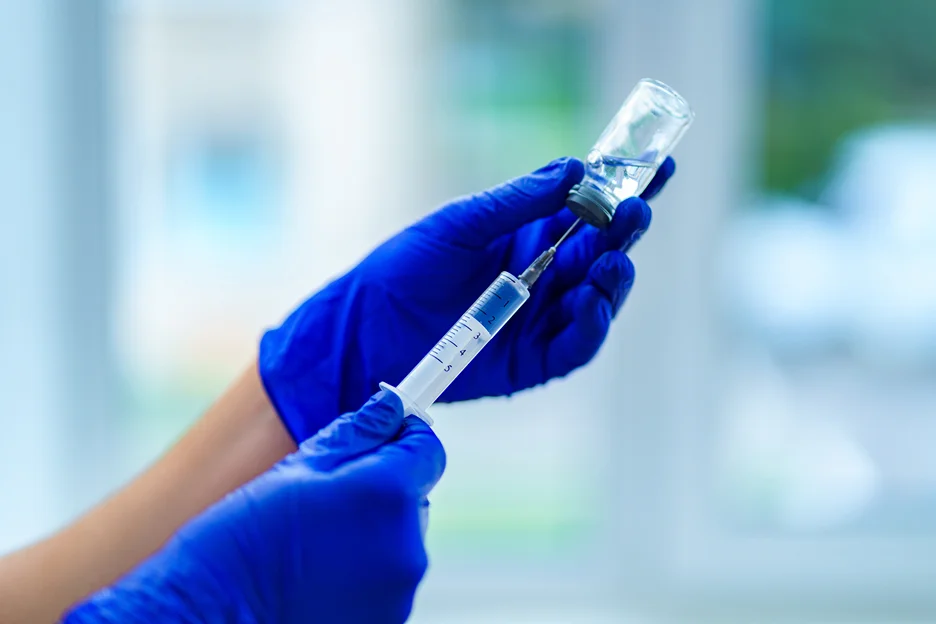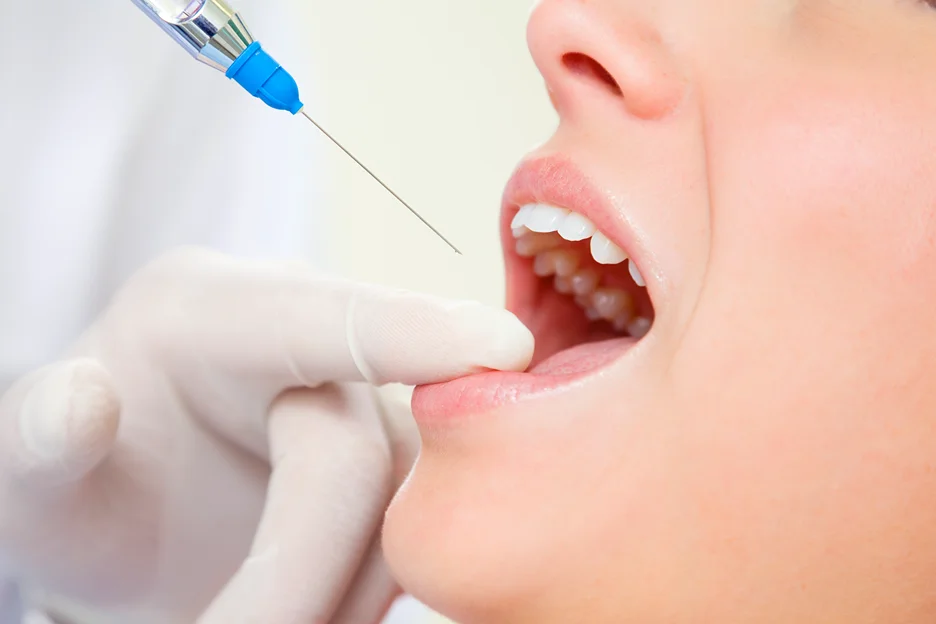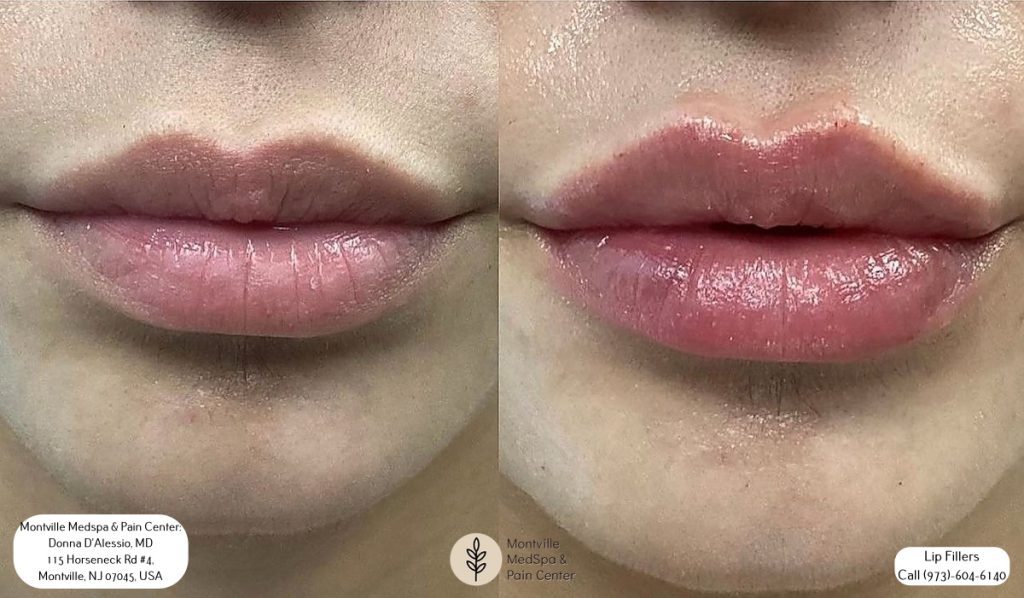Strategies for a Pain-free Lip Plumping Experience
Dental blocks are shots that numb your lips and mouth for a lip filler appointment. Getting a dental block from a professional makes fillers hurt less so you can relax during your lip plumping.
Plumper lips are in. But filler injections can be painful, making that perfect pout an unpleasant experience. The good news? Dental blocks allow you to kiss injection discomfort goodbye.
These targeted numbing shots work magic on lip and mouth tissues. With dental blocks, your lip filler appointment may just go from “ow!” to “wow!” Read on to learn how dental blocks can ease the lip enhancement process.
A Quick Introduction to Lip Fillers
Lip fillers are injectable treatments used to add volume and fullness to the lips. They are made of hyaluronic acid, a naturally occurring substance in the body that helps hydrate the skin. When skillfully injected into the lips, fillers can create a plumper pout and correct asymmetry. The effects of lip fillers are temporary, lasting 6-12 months before a maintenance injection is required.
The procedure is relatively quick, taking just 30-60 minutes in your provider’s office. It also doesn’t require any lab work or preparation beforehand.
While the procedure itself is fast, it can be quite uncomfortable. The lips and surrounding oral tissue are very sensitive areas. Multiple injections are required to achieve an even, natural looking result. This is where a dental block comes in very handy.
Discover how lip fillers at Montville MedSpa can enhance your pout with natural-looking, kissable results. Contact us today
What Exactly is a Dental Block?

A dental block is a local anesthetic injection used to numb a specific area in the mouth. It works by blocking the nerves responsible for sensation in that area, so the patient experiences little to no pain during the procedure. Dental blocks can be administered with a needle or topical gel, depending on the type of procedure being performed.
Dental Blocks for Lip Fillers
For lip filler procedures, a nerve block may be performed to numb the lips and surrounding oral tissues. The anesthetic is injected directly near the sensory nerves that provide feeling to the area, blocking the nerve impulses so the patient doesn’t feel the pain of the filler needle injections.
Dental blocks for lip fillers typically use lidocaine anesthetic, which takes effect quickly within 2-5 minutes and provides numbness for about 1-2 hours, sufficient time to complete the lip filler procedure.
Some common types of dental blocks used for lip fillers include:
| Dental Block | Description |
| Maxillary nerve block | Anesthetizes the upper jaw by blocking the maxillary nerve, which supplies sensation to the upper teeth and gums. Useful for numbing the upper lip area. |
| Mandibular nerve block | Numbs the lower jaw by targeting the inferior alveolar nerve, eliminating sensation around the lower teeth, chin, and lower lip. Ideal for procedures involving the lower lip. |
| Labial and buccal infiltration | Numb the lips and cheek area by blocking the sensory nerves. Allows direct targeting of lip tissues and surrounding areas. |
| Nasopalatine block | Numbs the front palate region by anesthetizing the nasopalatine nerve. Helps control pain for injections near the philtrum. |
Why Are Dental Blocks Recommended for Lip Fillers?
Dental blocks offer several benefits that make lip filler procedures much more tolerable:
Pain Management
Dental blocks effectively numb the lips, which have many sensory nerve endings, minimizing pain during multiple filler injections. This targeted numbing helps patients avoid the discomfort associated with the needle injections themselves .
More Comfortable Procedure
With effective numbing, patients can relax during the treatment, making the experience more pleasant and less anxiety-inducing. This comfort allows for a smoother procedure overall .
Safer Procedure
A dental block allows patients to remain still and comfortable, reducing the risk of sudden movements that could lead to accidental needle slips during injections. This precision is crucial for achieving desired results .
Less Anxiety
Knowing that the lips will be completely numb alleviates anxiety about potential pain, making the overall experience more manageable for patients
For these reasons, dental blocks should be considered mandatory rather than optional for lip filler procedures. The added comfort and safety are well worth the minor numbness.
The Dental Block Procedure Step-by-Step

Wondering what it’s like to actually get a dental block for lip fillers? Here is a step-by-step overview:
- Consultation and Review: This is a critical first step. During your consultation, we will discuss your goals, medical history, allergies, and any medications you are taking. This helps ensure you are a good candidate and allows us to tailor the treatment plan.
- Topical Numbing: A topical numbing cream like lidocaine is applied liberally to the lips and allowed to take effect for 10-15 minutes. This minimizes discomfort from the dental block injection. The numbing sensation will steadily increase during this time.
- Dental Block Injection: Using a small needle, we will inject the anesthetic into the gums above the teeth. There is pressure and a pinch with the initial injections. It takes approximately 5 minutes for the full numbing effect to take hold.
- Lip Filler Injections: With the dental block in effect, you should now feel complete numbness in the lips and mouth area. We can now inject the dermal filler smoothly and precisely into the lips with virtually no pain.
- Post-Procedure Care: Avoid eating, drinking hot liquids, or excessive lip motion for 1-2 hours as the anesthesia wears off. This prevents injury and supports proper healing. Use ice packs to reduce swelling.
- Results: Swelling and tenderness will subside within a few days. Final results are visible after 1-2 weeks. Schedule a follow-up to assess if touch-ups are needed.
Schedule a consultation at Montville MedSpa to learn more about our dental block process for relaxed, easy lip enhancements.
Are Dental Blocks Safe?
Dental blocks do carry some risks because they involve injection of medications. However, when administered properly by a trained professional, they are very safe.
Potential side effects include:
| Temporary Numbness | This is a normal and expected outcome as the anesthetic wears off after the procedure. |
| Bruising, Swelling, Pain | These are common injection-related reactions that may occur temporarily at the injection site. |
| Allergic Reaction | Allergic reactions to lidocaine are indeed uncommon, but it’s crucial for patients to disclose any known allergies before receiving a dental block. |
| Nerve Damage | While nerve damage is very rare, it can occur if the injection technique is not performed correctly. |
| Slow Heart Rate, Dizziness | These systemic side effects are rare but can happen, particularly if a large volume of anesthetic is injected or if the anesthetic enters the bloodstream. They typically resolve as the anesthetic metabolizes. |
We will discuss all dental block risks with you during the consultation. Make sure to disclose health conditions and medications that could impact your risk profile.
Are There Alternatives to Dental Blocks?
While dental blocks are the gold standard for maximizing patient comfort during lip filler injections, some alternatives do exist:
- Topical Numbing Creams
These creams contain numbing agents like lidocaine or prilocaine. When applied to the surface of the lips about 30 minutes prior to treatment, they can help reduce superficial pain from the initial needle pricks. However, topicals provide limited depth of numbness so do little for the deeper injection discomfort.
- Cooling Creams
Some injectors may use cooling creams containing menthol or other ingredients that provide a cooling sensation. This can temporarily distract from injection pain but does not truly numb. The effects are also short-lived.
- Oral Pain Medication
While this medication can take the edge off, it does not lead to profound numbness in the lips and is not as targeted or effective as a dental block.
- Vibration Anesthesia
This type of device uses targeted vibration to confuse nerve signals, reducing pain perception. However, the effects are temporary and only work while vibration is applied.
- Ice Packs
Some inflammation and numbness can be achieved using ice packs on the lips right before treatment. However, the numbness tends to be superficial and temporary.
For longer or more complex lip filler procedures, dental blocks are recommended to maximize patient comfort during treatment. However, choices regarding anesthesia should be made through informed discussion between patient and the provider.
Conclusion

When it comes to achieving beautiful, plump lips through filler injections, dental nerve blocks are a game-changer for comfort. Targeted dental blocks safely numb the sensitive lip area beforehand, allowing you to relax through the entire procedure.
If you want to minimize discomfort at your next lip appointment, be sure to ask our providers at Montville MedSpa & Pain Center about using dental blocks. Discover why this simple technique is a game-changer for filler patients seeking a smooth, easy experience.
Contact our office today to learn more about making your lip fillers as painless as possible. Our expert team stays up-to-date on the latest anesthesia methods to ensure your total comfort and satisfaction.
The path to your perfect pout awaits! Schedule a consultation now to get started.











